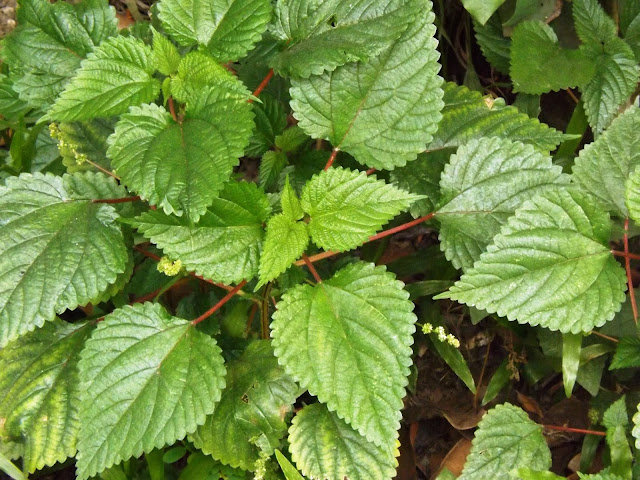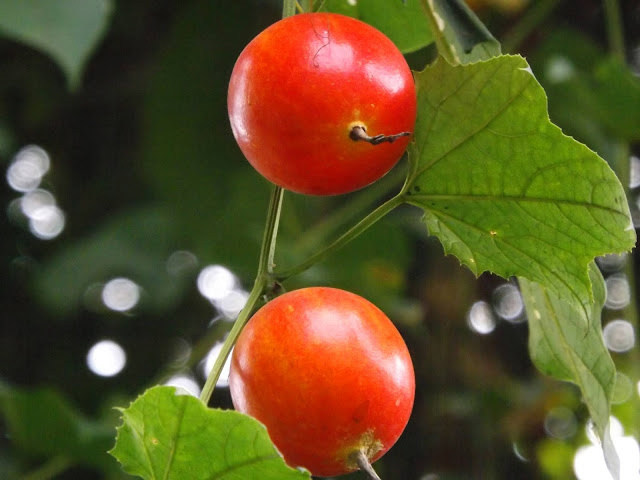Lal bichuti or Hawaiian wood-nettle, Laportea interrupta
Lal bichuti or Hawaiian wood-nettle (Laportea interrupta, family: Urticaceae) is a slightly woody herb covered with hairs all of its body. The plant does not reach a height of more than 1.5 m. The annual erect herb has stinging hairs. Stem, petiole, and spike are reddish, stem quadrangular. It mainly loves to grow in damp places, specially on fallow land, old wall and beside the roads in Bangladesh. Outside the country, it is found in South and Southeast Asia, Australia and Southwest Pacific islands.
Other names: Choto chutra, Chotrapata, Chutrapata, Chutka, Panchotra (Bang); Hen's nettle, Stinging nettle (Eng).
Leaves cuase itching in contact a body. These are hairy and shiny green, ovate, cordate at base, acute at end, 6-10 cm long and 4-6 cm wide, alternate, deeply and regularly dented. Petiole is reddish and very long.
Flowers are tiny, greenish, petals 4, sepals 4; in axillary inflorescences. Spike is very long, 5-28 cm. The flowers are usually unisexual and the female and male flowers grow on the same plant. Fruits are achene, tiny. Flowering occurs in rainy season. It is propagated by seeds.
It is used in whooping cough, stomach-aches, asthma etc. Roots are used to destroy insects and pests. Although it can cause itching but it is quite a beautiful plant. It can be planted in the garden as a pot plant.
Synonyms: Boehmeria interrupta, Boehmeria javanica, Boehmeria spicata, Fleurya glomerata, Fleurya interrupta, Fleurya spicata, Fleurya spicata var. interrupta, Schychowskia interrupta, Urtica affinis, Urtica capitata, Urtica gaudichaudii, Urtica interrupta, Urtica javanica, Urtica lomatocarpa, Urtica racemosa, Urtica sessiliflora, Urtica spicigera.







Excellent
ReplyDelete